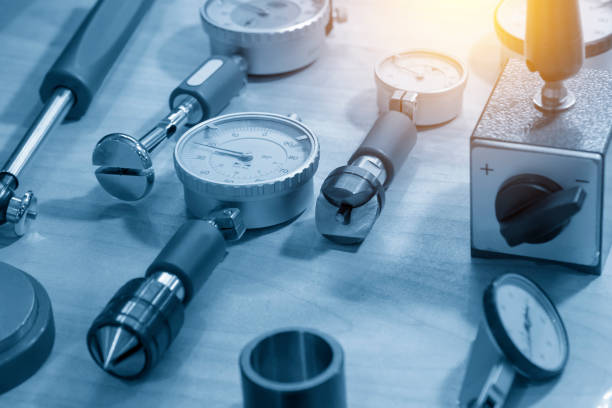Technical Challenges in Instrument Calibration Solutions
Instrument calibration is a critical process that ensures measurement devices provide accurate and reliable readings. For businesses relying on precise measurements—such as those in manufacturing, pharmaceuticals, food and beverage, and other industries—implementing effective Instrument Calibration Services is crucial. However, the path to successful calibration is fraught with technical challenges. This article explores these challenges and provides actionable insights to overcome them. If you’re looking to find out more about enhancing your calibration processes, read on.
Understanding Instrument Calibration
Before delving into the challenges, it’s essential to understand what instrument calibration entails. Calibration involves comparing a measurement instrument against a standard or reference to identify any discrepancies. This process ensures that the instrument operates within the specified accuracy limits. Regular calibration is vital not just for compliance with industry standards but also for maintaining product quality and safety. Get more information on why regular calibration is essential for your business.
Common Technical Challenges
Equipment Variability
One of the most significant challenges in Instrument Calibration Services is equipment variability. Different manufacturers may produce instruments that operate under different conditions or specifications. When calibrating equipment from various manufacturers, technicians must understand each device’s unique characteristics. This variability can lead to inconsistencies in calibration results if not properly managed.
Solution: Implement a standardized calibration procedure that accounts for the unique requirements of each type of instrument. Providing training for technicians on the specifics of different manufacturers can also enhance accuracy. To find out more about standardization, consider exploring professional services that specialize in calibration.
Environmental Factors
Environmental conditions can significantly impact the calibration process. Factors such as temperature, humidity, and pressure can alter how instruments perform, leading to inaccurate readings. For example, a temperature sensor might give erroneous readings if calibrated in an environment with fluctuating temperatures.
Solution: Ensure that calibration is performed in a controlled environment. Establish protocols to monitor environmental conditions during calibration processes, and consider conducting calibrations in conditions similar to the instrument’s operational environment. Get more information on maintaining optimal calibration environments from industry experts.
Data Management Issues
The calibration process generates a wealth of data, including readings, adjustments, and historical records. Managing this data effectively can be challenging, particularly for organizations that use multiple instruments across various locations. Inconsistent data management can lead to errors in reporting and compliance issues.
Solution: Invest in a robust data management system to track calibration results, schedules, and compliance documents. A centralized system can streamline data collection, making it easier to monitor trends and identify issues promptly. Professional services can help set up and maintain this system, ensuring smooth operations.
Skill Gaps Among Technicians
Calibration requires a high level of technical expertise. A lack of properly trained technicians can lead to miscalibrations or overlooked maintenance tasks. Furthermore, as technology advances, technicians must stay updated on the latest calibration techniques and standards.
Solution: Regular training and professional development opportunities for calibration technicians are essential. This ongoing education helps ensure that personnel are equipped with the necessary skills and knowledge to perform accurate calibrations. Find out about training programs available to enhance your team’s expertise.
Compliance with Standards
Adhering to industry standards and regulations is a vital aspect of instrument calibration. Non-compliance can result in severe penalties, product recalls, or reputational damage. The complexity of various standards—ranging from ISO to FDA regulations—can make compliance challenging, especially for businesses operating in multiple sectors.
Solution: Develop a comprehensive understanding of applicable standards and incorporate them into calibration procedures. Collaborating with specialists in compliance can provide valuable support. This partnership helps ensure that all calibrations meet the required regulations, reducing the risk of non-compliance. Get more information about compliance resources available for your industry.
Cost Management
Budget constraints often pose a challenge to effective instrument calibration. Organizations must balance the costs of calibration with the need for accuracy and compliance. Investing in calibration services may seem expensive upfront, but the costs of inaccuracies and potential legal issues can far exceed the initial investment.
Solution: Implement a proactive maintenance and calibration schedule to prevent costly breakdowns and inaccuracies. By prioritizing preventive maintenance, organizations can reduce long-term costs associated with equipment failures and ensure consistent performance. Find out more about cost-effective calibration strategies from experienced professionals in the field.
Conclusion
Navigating the technical challenges in Instrument Calibration Services requires a combination of expertise, standardized procedures, and effective data management. By understanding the common issues faced during calibration and implementing actionable solutions, organizations can enhance the accuracy and reliability of their instruments. Investing in training and technology ensures that calibration processes are efficient, compliant, and cost-effective.
By addressing these challenges head-on, businesses can maintain high-quality standards in their operations, ultimately contributing to greater efficiency and customer satisfaction. Get more information on how professional services can support your calibration needs, and explore expert advice tailored to your industry.














Post Comment